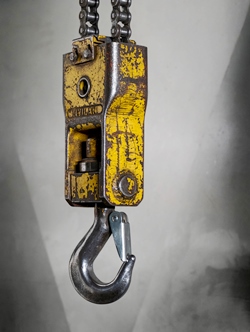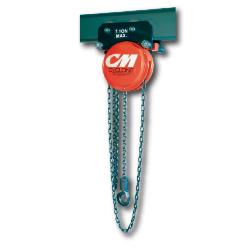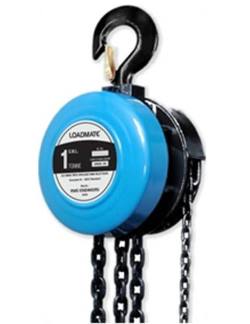Lifting Equipment Inspection Checklist
Hoist Safety Inspection Checklist
 The information provided on this page has been curated for guidance purposes only and is not to be construed as approved custom and practice. No action should be taken solely on the information outlined in this content. Please consult the Lifting Equipment Engineers Association (LEEA) for the latest recommended working practices.
The information provided on this page has been curated for guidance purposes only and is not to be construed as approved custom and practice. No action should be taken solely on the information outlined in this content. Please consult the Lifting Equipment Engineers Association (LEEA) for the latest recommended working practices.
In addition, you should also reference the following publications available from the Health and Safety Executive:
Thorough Examination of Lifting Equipment
The inspection of lifting equipment and subsequent repair and maintenance can be undertaken in different ways and is entirely dependent on the policies, operational conditions and working practices of different companies and organisations. For instance, repair and maintenance policies are governed by the number of employees and the magnitude of an operation’s undertakings.
Other factors like the type of lifting equipment in their equipment register and the relative availability of experienced, fully trained and “competent” maintenance operatives using a pre-approved lifting bear inspection checklist.
Lifting Gear Inspection
 As mentioned above, repair and maintenance of all lifting equipment such as hoists, slings, shackles, jacks and winches must be carried out by highly experienced individuals who have received professional training and who are ideally qualified to carry out inspection procedures using a lifting gear inspection checklist. In doing so, an inspector should be fully conversant with the operability of a particular piece of lifting equipment by referring to manufacturers’ technical manuals.
As mentioned above, repair and maintenance of all lifting equipment such as hoists, slings, shackles, jacks and winches must be carried out by highly experienced individuals who have received professional training and who are ideally qualified to carry out inspection procedures using a lifting gear inspection checklist. In doing so, an inspector should be fully conversant with the operability of a particular piece of lifting equipment by referring to manufacturers’ technical manuals.
A typical lifting gear inspection checklist contained within lifting equipment software for inspection personnel responsible for assimilating the important content of a technical manual includes the requirement to:
1. Thoroughly read the operational, maintenance data contained within the manual provided for a particular piece of lifting gear
2. Examine and take heed of all warnings provided in the manual
3. Thoroughly read all detailed instructions provided for a given piece of equipment covering the operating parameters, inspection and maintenance of a particular piece of equipment
4. Ensure complete familiarity with the controls and functions of all types of lifting equipment they are required to inspect, test and maintain
 Lifting Equipment Checklist
Lifting Equipment Checklist
It can’t be emphasised enough that operatives responsible for conducting periodical inspections, repairs and maintenance must be proven to be “competent” to do such work in accordance with the LOLER regulations.
When it comes to chain blocks and hoists, the following guidelines provide a sensible lifting gear inspection checklist approach to their inspection.
If there is a load on the hoist, it should be removed. Extra care must be taken if the load is on chain or wire rope slings in order to let the slings become safely “lax” before removing the load.
A hoist being subject to an inspection should be moved to location away from the working area. This could be movement to another part of the factory floor if in a trolley or dismantled and taken to a workshop.
It is vital that there is safe personnel access to the chain block, crane or hoist if inspection work is to be done insitu in the working environment. particularly of height access is required. If inspectors are required to work above ground level then elevated working platforms or scaffolding should be provided together with appropriate “working at height” precautionary measures.
In addition, barriers and warning signage should be deployed underneath the work area where inspection, maintenance or repair work presents a hazard to other employees working beneath the hoist or crane.
Lifting Tackle Inspection Checklist & Hoist Safety Inspection Checklist &
Once inspection, repair and or maintenance has been carried out, the following actions should be undertaken ideally with the utilisation of a lifting gear inspection checklist within LOLER inspection software.
- All covers or guards on the chain block or hoist which were removed to conduct inspection work must be reinstated
- If other safety devices on a trolley hoist or crane which were immobilised to carry out the work should be re-engaged
- All parts removed and other waster material must be removed together with all tools and equipment used in the inspection and maintenance processes
- Warning signs erected to protect other personnel should be removed by authorised supervisory staff
- Tags and locks on the switch/disconnect devices to control electrical or pneumatic power supplies shall be restored by a competent person as defined in the LOLER Approved Code of Practice and guidance (Paragraph 294)

